From the iconic Table Mountain and Cape Point to the penguin colony at Boulders Beach and lush Kirstenbosch Botanical Gardens, Cape Town has many world-famous attractions, but the Cape Winelands and its viticultural history dating back to the 1650s has to be one of the most famous.
The Cape Winelands is a strikingly beautiful region made up of three main wine-areas; Stellenbosch, Franschhoek and Paarl. These valleys produce some of the world’s finest wines and a trip to Cape Town would not be complete without sampling some of the area’s best vintages on a Cape Winelands tour.
History of the Cape Winelands
After the Dutch first settled in South Africa in 1652 to set up a port to provide fresh food and water to the passing ships of the Dutch East India Company, wine farms started springing up in and around Cape Town.
With fertile land and an ideal climate for growing grapes, the first wine was produced in South Africa in 1659 by Dutch explorer, Jan van Riebeeck who founded Cape Town.
Paarl was established as in 1657 when Dutch settler, Abraham Gabemma went searching for new cattle trade relationships inland with the Khoisan inhabitants. During his trip, Gabemma spotted a giant granite rock glistening in the sun and decided to name it Diamond and Pearl Mountain. From this, the name Paarl, which means pearl in Afrikaans, is derived. The area’s soil was ideal for growing grapes and settlers who moved here soon began planting vines.
In 1685, the then Governor of the Cape, Simon van der Stel, established the first wine estate in South Africa, Groot Constantia in Cape Town’s Constantia Valley Wine Route. His sweet Vin de Constance was wildly popular and found its way into the glasses of Napoleon Bonaparte and Louis XVI, and was even referenced in both Charles Dickens’ and Jane Austen’s works.
Simon van der Stel made a few trips inland of the Cape Colony where he took a particular interest in the exquisite area near the Eersterivier (First River). In 1679, it was named after him, and the town of Stellenbosch soon began attracting settlers who took advantage of the near-perfect fertile valley in which to grow grapes.
Shortly afterwards, in 1688, French Huguenots fleeing religious persecution in France sought asylum and were granted land in the Drakenstein Valley. This area went on to become the aptly named Franschhoek, which translates to French Corner.
The Huguenots’ knowledge of viticulture helped the region overtake the Constantia Valley and Stellenbosch to become the most prolific wine producing region in the area in just two decades.
The three distinct regions of Stellenbosch, Franschhoek and Paarl make up the vast majority of the Cape Winelands and boast some of the finest wine estates in the world.
Stellenbosch
Surrounded by am amphitheatre of breathtaking mountain peaks, where thatched-roof, white houses dot the oak-tree-lined streets, Stellenbosch is a beautiful, historic town that every traveller needs to visit.
With its rich culture and history, there are ample museums and attractions to visit as well as charming eateries that spill out onto the narrow streets, conjuring scenes of reminiscent of rural European villages. It is the magnificent wine estates that draw countless tourists to this verdant valley where food and wine flow in abundance.
Sample exquisite, bold and heady red wines at Rust en Vrede while lapping up the views across the valley. Sip on the wines at Waterford Wine Estate and look out over the vineyards in which they were grown, or ascend the Helshoogte Pass and visit world-renowned Thelema Mountain Vineyards to taste wines kissed by the cooler air of the mountain slopes. Travellers can even enjoy making their own blend of wine at Stellenrust Wine Estate during the harvest season from January to March.
There are countless other wine farms, each with their own unique ambience and wine cultivar just waiting to be explored by bike or by foot in the Stellenbosch Valley.
Franschhoek
Hailed as the culinary capital of South Africa, the Franschhoek Valley is arguably one of the most famous wine regions in the Cape Winelands. With exquisite wines on offer, it’s no wonder that Franschhoek boasts some of the country’s top restaurants.
Pop in for a food and wine pairing at The Tasting Room at Le Quartier Francais, indulge in delicious food and soak up the sublime, sweeping views of the valley from Mange Tout at Mont Rochelle, or delight your senses with a wine tasting Haute Cabriere.
With so many world-class wine estates to choose from, perhaps the best way to experience the valley is on the Franschhoek wine tram. With a range of tram routes to choose from, passengers aboard the hop-on-hop-off tours can journey through rolling vineyards and breathtaking scenery as they stop at some of South Africa’s oldest and internationally-renowned wine estates.
Foodies looking to get involved will delight in the opportunity to bake their own bread at the premier estate, Môreson. From focaccia and soda bread to olive oil brown and sourdough, guests can sample their bakes along with the estate’s flagship wines whilst being treated to a leisurely lunch in the shade of the beautiful old oak trees.
Paarl
Just a stone’s throw from the Franschhoek Valley, Paarl offers a more laid-back wine tasting experience. With less mainstream tourist attractions and activities, this valley still boasts one-of-a-kind wine tasting and dining experiences.
Visit the rustic Fairview Wine and Cheese Estate and sample beautiful goats cheeses paired with delightful red and white wines, and be sure to take a photo with the famous goats, or visit the iconic Babylonstoren for one of the most unique dining experiences in the Cape Winelands. With a beautifully manicured garden tapestry, all fruit and vegetables grown here are used in the two restaurants’ seasonal menus and expertly paired with their delicious and understated wines.
For travellers wanting a sophisticated experience, visit the home of polo at the Val De Vie Estate and dine at one of the three fantastic restaurants nestled in this slice of paradise in the Paarl Valley.
Of course, these three regions are just the tip of the iceberg when it comes to exploring the Cape Winelands and all they have to offer.
With other prolific wine-producing regions such as Robertson, Wellington, Hemel en Aarde, Botrivier and even Elim in the Cape Agulhas region, travellers will need to extend their stay if they are to experience all the food, wine and charming destinations that make up the Cape Winelands.
Ready to start exploring the famous Stellenbosch, Franschhoek and Paarl regions? Contact us to book your food and wine experience on your Cape Winelands vacation.

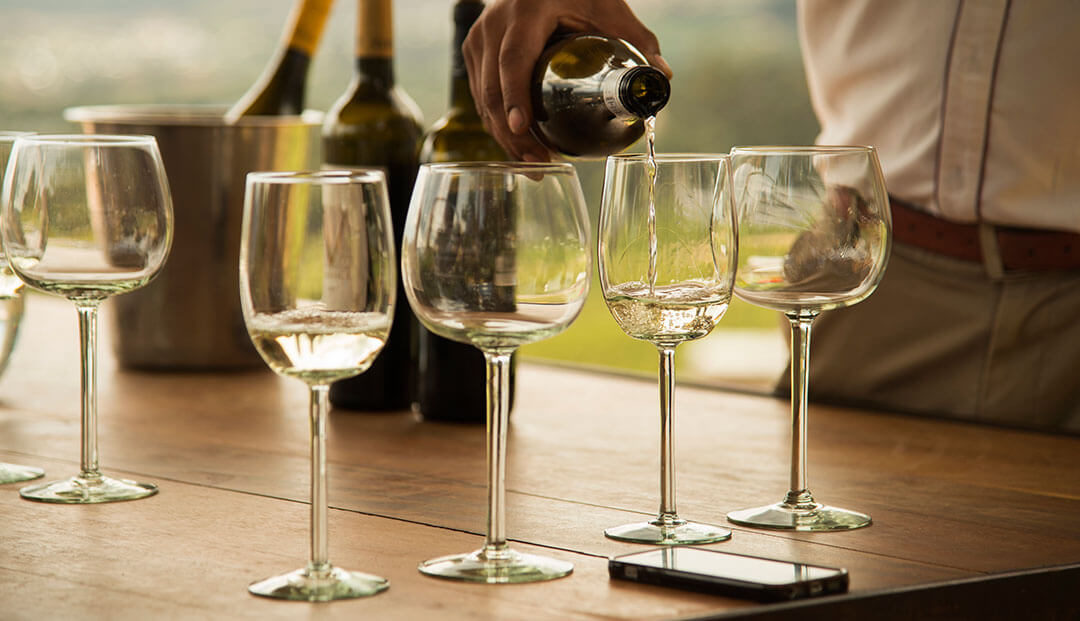
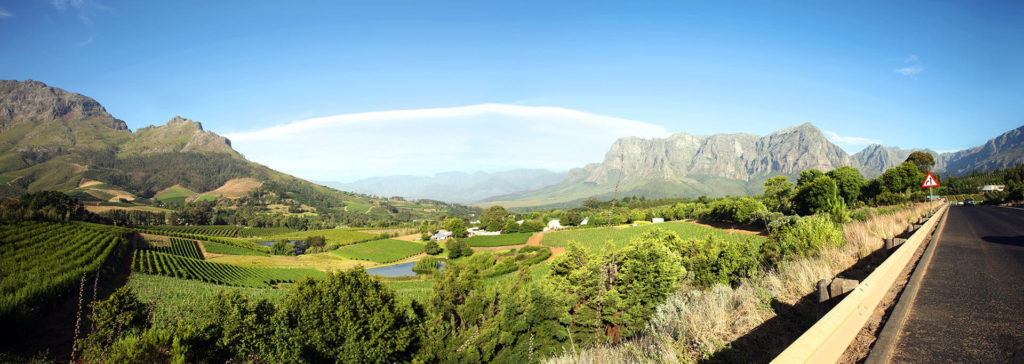
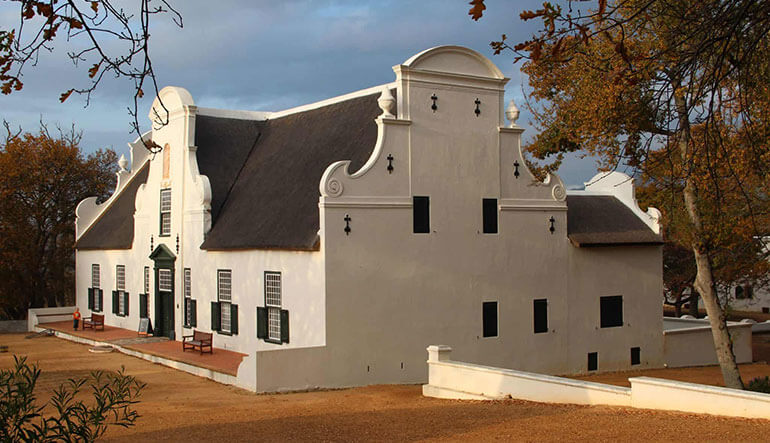


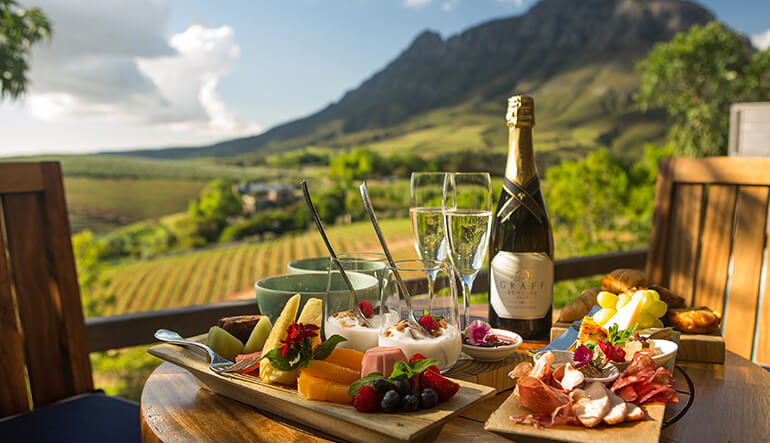
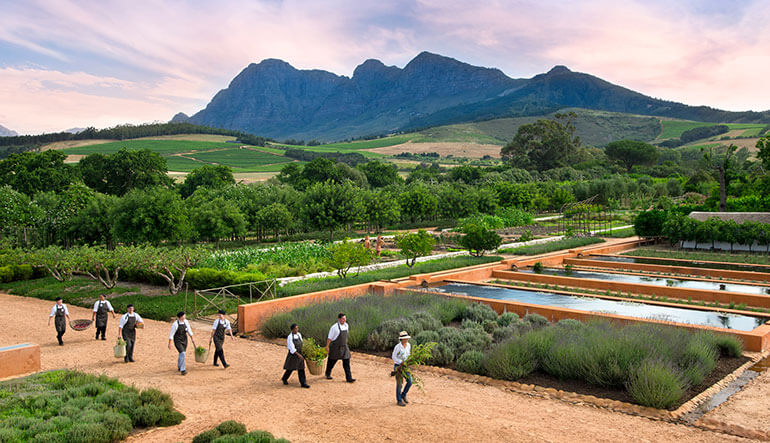
the most beautiful part of South Africa
😍😍
Is more information on Franschhoek history available?
Hi! Great suggestion, we’ll add this to our content calendar and create a post in the upcoming months! Stay tuned!
Hi there! We wrote a post explaining more info on the history of Franschhoek.
Check it out: https://africantravelcanvas.com/cape-winelands-guides/the-history-of-franschhoek/
I will like to know why the Jauberts (Jouberts) names does not exist in this history of Paarl, Franschoe, Wllington,Winelands.
The Jouberts arrived in 1688 in South Africa and help build the Western Cape Wines and schools and church in these areas.
It is very sad to the Jouberts names does not show antwhere.